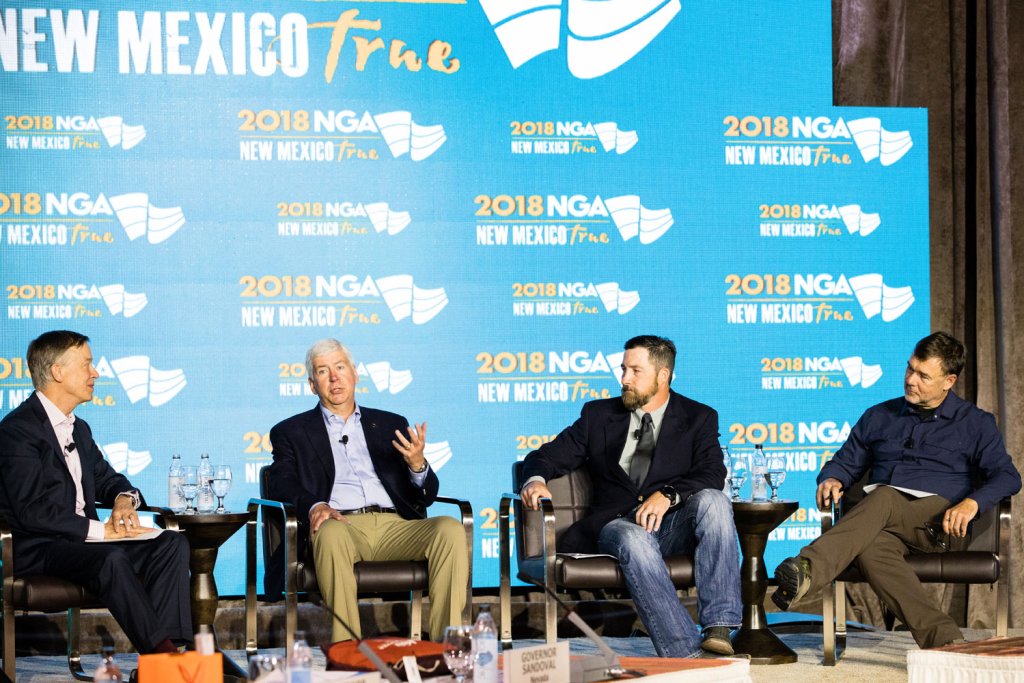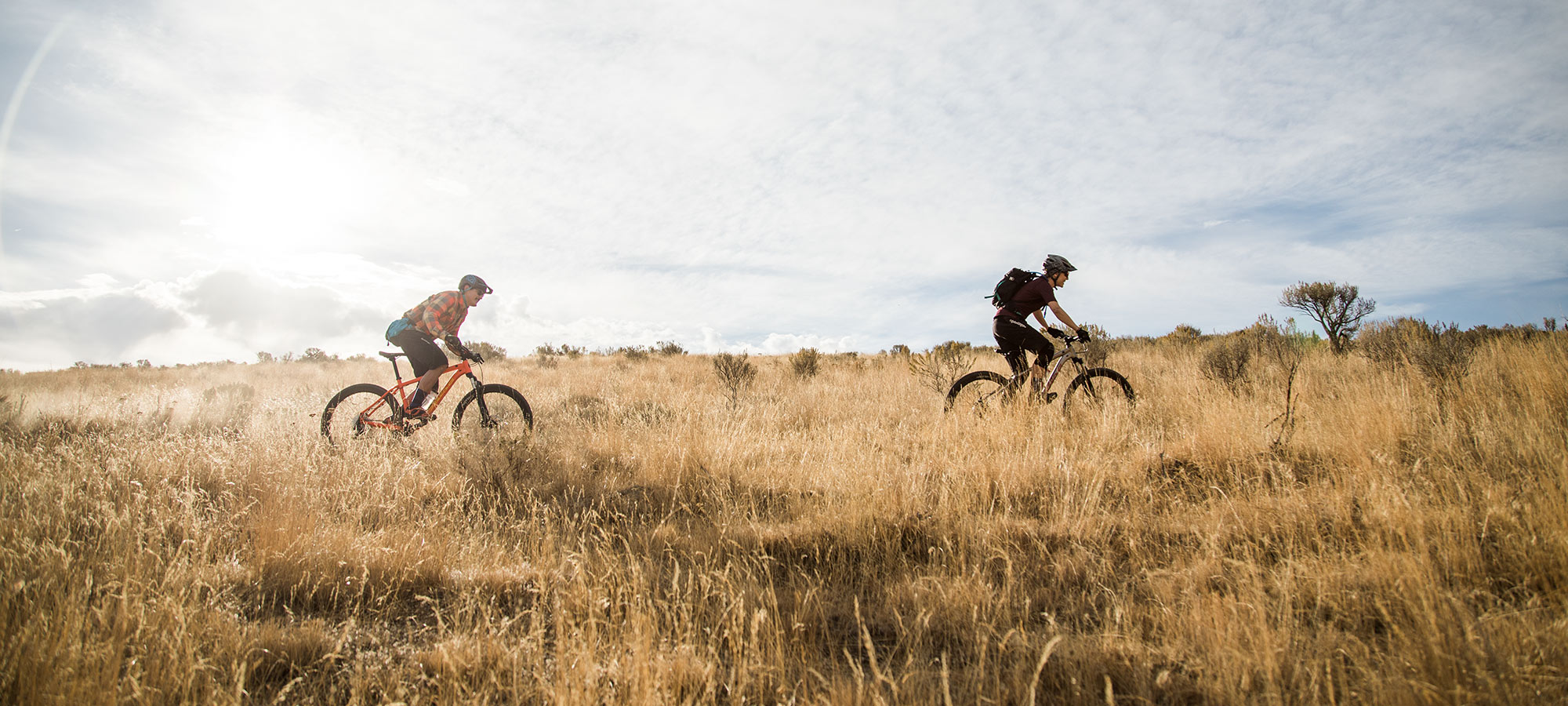On Wednesday morning in Denver, representatives from eight states signed the first-ever Outdoor Recreation Industry Confluence Accords. This “constitution for recreation” outlines guiding policy principles for the $887 billion outdoor industry, which supports 7.6 million American jobs. Directors of outdoor recreation offices in Colorado, Montana, North Carolina, Oregon, Utah, Vermont, Washington and Wyoming joined the effort.
For people who love the outdoors, this means these states now have someone with a direct line to the governor who is working both in-state and with peers around the country to put more resources into trails and parks, and increase awareness of the economic, personal health, and youth and community development benefits of time outdoors. The coalition paves the way for states to share knowledge and promote work for the broader benefit of all.
This movement has been building in a bipartisan fashion for several years. Utah created the first outdoor recreation office in 2013, with Washington and Colorado following in 2015. To capitalize on the momentum, Colorado hosted an inaugural Confluence Summit last January, where more than 100 delegates from eight states met to begin work on the Accords. The document was finalized at a second meeting of the delegation in Asheville, North Carolina, earlier this month.
“It’s been a groundbreaking coming together of outdoorists from different political backgrounds but with a shared love of the outdoors,” said Marc Berejka, REI’s director of government and community affairs. Berejka says REI and other stakeholders from the outdoor community have been proud to participate in and support the effort.
“Our industry is incredibly siloed,” said Luis Benitez, director of Colorado’s Outdoor Recreation Industry Office. “You’ve got the hunters over here, the climbers over there, the boaters over there. We try to break down some of those barriers, get everybody at the same table talking about the same things.”
More states are poised to join the eight-state Confluence coalition: There are expressions of interest from Arkansas, Kansas, Maryland and Michigan. Bills to create new offices of outdoor recreation have been under discussion in Alaska, California, Massachusetts and New Mexico, as well. Those states stand to see more trails, new recreation programs, conservation incentives and a healthier citizenry.

Colorado Governor John Hickenlooper, Michigan Governor Rick Snyder, Kryptek Outdoor Group founder Butch Whiting and REI CEO Jerry Stritzke at the NGA Summer Meeting in Santa Fe, New Mexico. (Photo Credit: Rebecca Drobis)
The role of—and potential for—outdoor recreation was also a major topic of discussion last week at the 2018 National Governors Association (NGA) Summer Meeting in Santa Fe, New Mexico. During a session, Colorado Governor John Hickenlooper and Michigan Governor Rick Snyder along with Kryptek Outdoor Group founder Butch Whiting and REI CEO Jerry Stritzke shared with other governors why they believe this trend and the outdoor industry’s potential matter to every state.
“This is not a Democratic or Republican issue,” Governor Hickenlooper said. “You look at the landscape of all the things that divide us, this is a great opportunity to really unite us. After you finally get to the top of a peak or you see the sunset at the end of a long day outdoors, you really do get a sense of why we all love where we are.”
Stritzke called public access to the outdoors a uniquely American concept. “If you sit for a minute and say, what’s amazing about your state? At some point, you’re going to begin to talk about the outdoor experiences associated with it,” he told the governors. “Born and raised in Oklahoma, I can’t hear a dove and not think about growing up on the farm.”
The NGA session covered both the direct economic benefits of the outdoor industry and the ways in which outdoor recreation benefits public health, youth development and communities.
“The bigger picture is that when you have access to the outdoors daily, life is better for every one of us,” Berejka said. “Communities also are stronger when they create easy access to enjoyable green spaces and outdoor experiences.”
Michigan, for example—which created an outdoor recreation advisory council in May—is connecting existing bike paths to create the Iron Belle Trail, a 2,000-mile-long biking and hiking route between the tip of the Upper Peninsula all the way to Belle Isle in Detroit. The trail, which is 70 percent complete, will eventually pass through hundreds of municipalities. Michigan has a water trail system in the works, too, and in 2015, opened the Outdoor Adventure Center in downtown Detroit to provide kids and families experiences that teach them about camping, kayaking and citizen science. Colorado, meanwhile, wants to ensure every child lives within a 10-minute walk of a green space by 2038.
“When you have access to the outdoors daily, life is better for every one of us.”
Such focused, multi-stakeholder efforts that foster partnerships and funnel dollars toward public lands are the hallmark of the new state-led approach. Last century, states might have created extraordinary parks, Berejka adds, but stewardship agencies and their friends didn’t necessarily develop bridges into allied agencies like departments of education, transportation and public health, nor economic development and marketing.
“For decades, a multi-billion-dollar economy has been relying on a nonprofit ecosystem to take care of all of these things,” Benitez said. “You don’t hire volunteers to repair machinery on a factory floor that makes cars, right? That’d be ludicrous. Yet that’s exactly what we do.”
Access to these places—be it transportation, programs for underserved minorities, or streamlined permitting for guides—has been a roadblock to recreation, too. Outdoor rec offices propose to address that.
“You could have a wonderful state park within 5 miles of a downtown center,” Berejka points out, “but if visitors primarily come by personal car or RV, what percentage of your population doesn’t really enjoy that access?”
In his remarks at NGA, Stritzke highlighted REI-supported programs that, for instance, bus people to trailheads just outside of Seattle or build mountain bike parks in southeast Chicago. These initiatives could become standard in an effort to rewild cities and make outdoor recreation the norm for urban dwellers and rural communities. In turn, rural towns and urban centers adjacent to such experiences, according to the Outdoor Industry Association’s latest report, thrive in long-term ways that boom-and-bust towns hosting extractive industries often can’t, once resources run dry and industry leaves. Because outdoor experiences often breed lifelong passion, state economies—and the quality of life for its citizens—go up and stay there, what the OIA calls “compounding returns.” In Washington State alone, the outdoor industry generates $26.2 billion in consumer spending and $7.6 billion in wages and salaries to 201,000 jobs, according to the Outdoor Industry Association.
“[States] want more people in their parks,” Stritzke said after the NGA panel. “We want access. We want to be able to run programs to get people there that haven’t been there before. We’re moving to a model where you’ll be able to identify the kind of opportunities that are uniquely suited to you.”
Part of a state outdoor rec office’s job is to advocate for investment in the outdoors, which in part means informing communities about a state’s natural treasures and helping people get where they want to go. Stritzke says the transformation happens because states are recognizing that it drives economic development in new areas.
Marc Miller, deputy director of Michigan’s Department of Natural Resources, echoed that sentiment. “We want outdoor recreation and conservation to be relevant in as many people’s lives as possible,” he said. “If people are connected to a place in their lifetime, they’re more apt to try to protect, preserve and enjoy it, and pass it on to future generations.”


